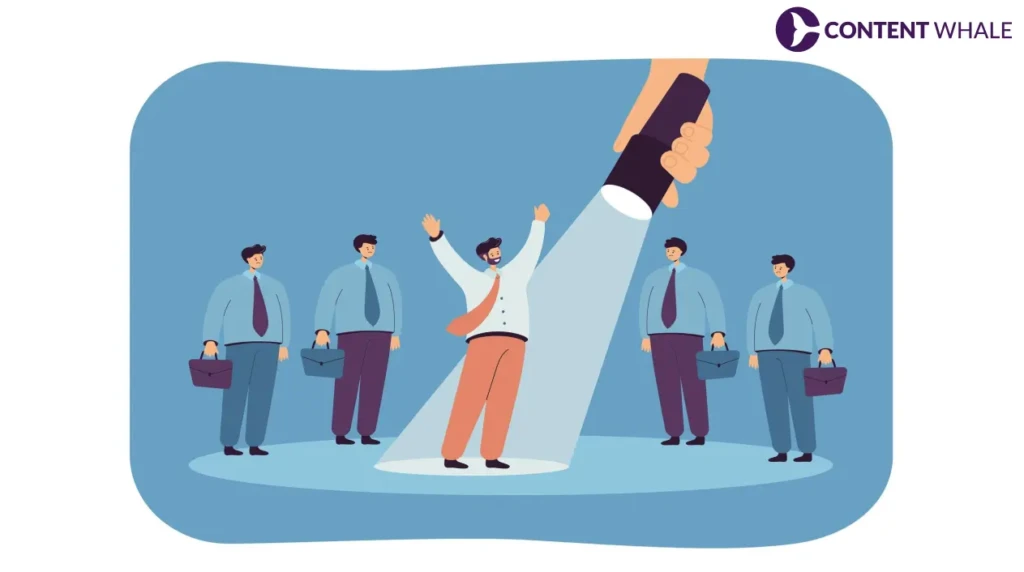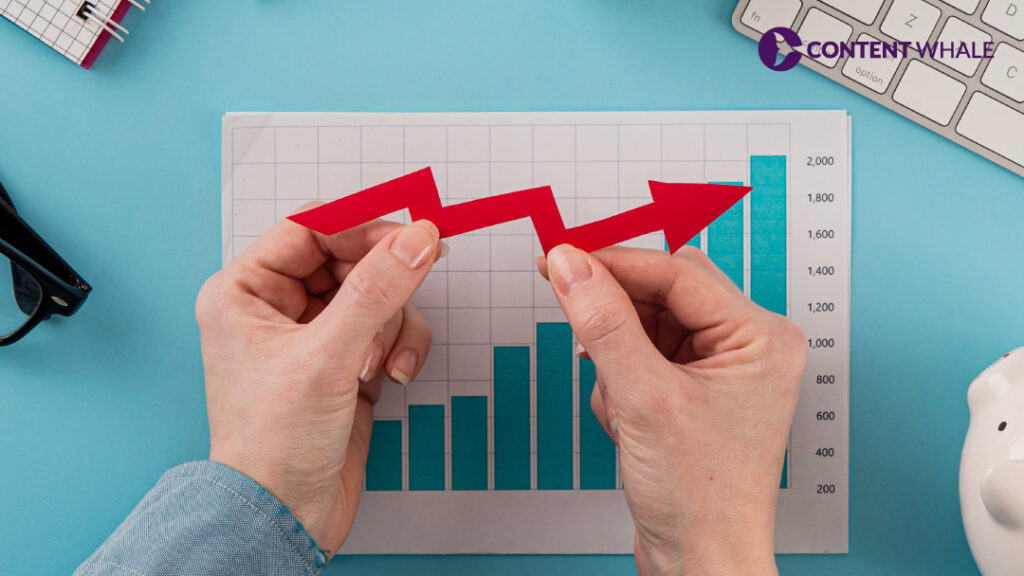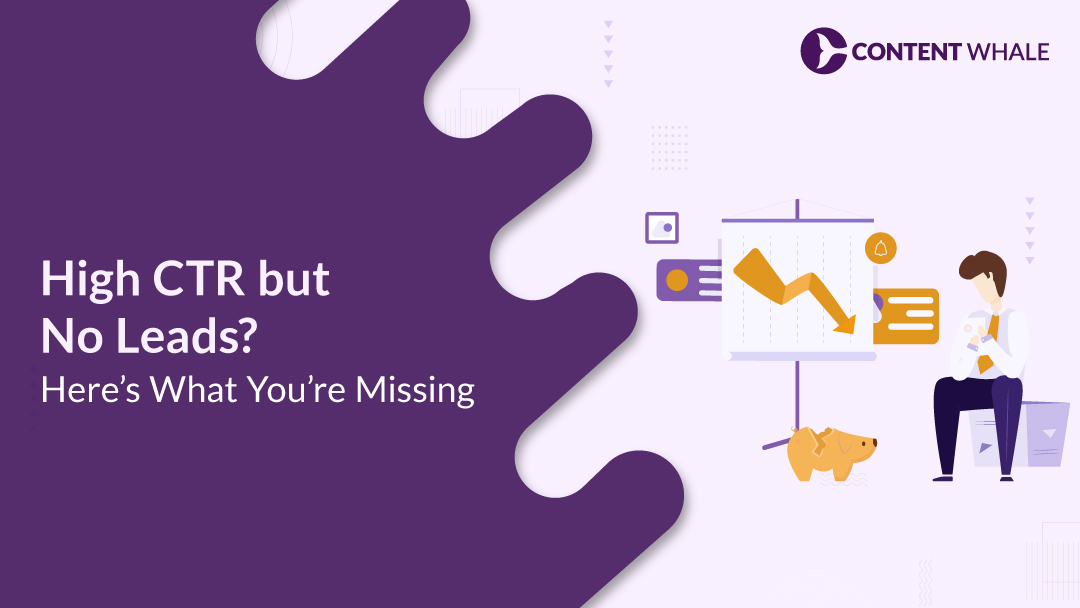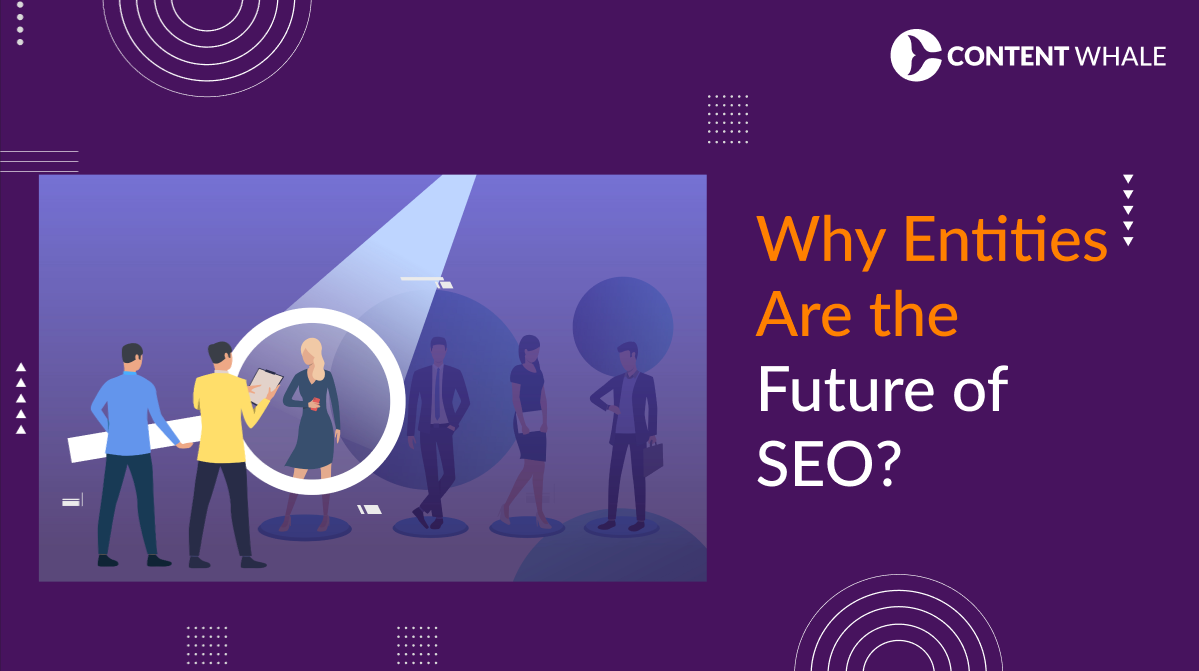Imagine this: Your PPC campaigns are generating an impressive number of clicks, and your click-through rate (CTR) is soaring.
But there’s a problem—those clicks aren’t turning into leads. You’re facing the frustrating dilemma of conversion-less clicks, where your high CTR doesn’t translate into results.
Many businesses fall into this trap, celebrating a great CTR while overlooking what really matters—conversions. The issue could lie in ad misalignment, a post-click experience mismatch, or a poorly optimized sales funnel.
Let’s dive into what’s going wrong and explore how to fix these PPC conversion issues to finally turn clicks into meaningful leads.
1. Click-Rich, Conversion-Poor: The Real Story Behind the Numbers
Getting a high click-through rate (CTR) can feel like a victory, but what happens when those clicks don’t convert into leads or sales?
This click-through rate dilemma is common in digital advertising, where businesses celebrate high CTR but face conversion-less clicks that ultimately waste resources.
A) Why CTR Isn’t the End-All Metric
A high CTR shows that your ad is getting attention. However, without conversions, that attention isn’t valuable. Here are a few reasons why focusing on CTR alone can be misleading:
- Vanity Metric: CTR measures how compelling your ad is, not how effective it is at driving revenue.
- Wasted PPC Traffic: Paying for clicks that don’t convert drains your budget and leaves you with ad clicks but no conversions.
B) The Illusion of Success with High CTR
Focusing on CTR can give you a false sense of accomplishment. Here’s why:
- Ad Misalignment: If your ad copy doesn’t align with the user’s intent, you’ll attract irrelevant clicks.
- User Intent Mismatch: Without understanding what your audience needs, your post-click experience won’t deliver, leaving you with a high CTR and low leads.
2. The Silent Conversion Killer: Targeting the Wrong Audience

Achieving a high click-through rate (CTR) is great, but if your ads are reaching the wrong audience, you end up with conversion-less clicks and wasted ad spend. Poor targeting is one of the biggest culprits behind high CTR but low leads, creating a significant gap in your lead generation efforts.
A) How Misaligned Targeting Hurts Conversions
Targeting the wrong audience leads to:
- User intent mismatch: Your ads attract users who are not interested in converting, resulting in a post-click experience that doesn’t align with their needs.
- Lead generation gap: Although your ads are getting clicks, these visitors are less likely to become leads, wasting your ad budget.
B) Using Negative Keywords to Filter Irrelevant Traffic
One of the most effective ways to refine targeting and minimize wasted PPC traffic is by implementing negative keywords. These can:
- Prevent your ads from showing up for irrelevant searches, reducing irrelevant clicks.
- Ensure your ads are shown to a more relevant audience, improving the quality of traffic.
- Save money by reducing clicks from users who are unlikely to convert.
For example, if you sell premium products, you can exclude terms like “cheap” or “discount,” which attract bargain hunters, helping you focus on converting high-intent traffic.
C) Optimizing Targeting for Better Results
- To improve performance and reduce click wastage, regularly update your negative keyword list and refine your ad-targeting solutions.
- This will help you avoid poor conversion funnels and drive qualified traffic that is more likely to convert, ultimately enhancing your ad performance optimization.
3. Your Ad Says One Thing, Your Landing Page Another

One of the most common reasons businesses face conversion-less clicks despite a high CTR is a post-click experience mismatch. Simply put, if your landing page doesn’t deliver what the ad promised, you’re likely to see ad clicks but no conversions.
This misalignment causes confusion and frustration, leading users to leave the page before converting.
A) The Disconnect Between Ad Promises and Landing Pages
- When your ad promises one thing and your landing page fails to deliver, it’s like a broken handshake.
- For instance, your ad might offer a specific product or discount, but the landing page shows unrelated content or doesn’t follow through on the offer.
- This creates a user intent mismatch and contributes to a poor conversion funnel, where visitors click but fail to convert.
Here’s how to fix it:
- Consistency is key: Ensure that your landing page headlines, visuals, and calls-to-action (CTAs) align perfectly with the ad. If your ad offers a discount, make sure the landing page prominently displays it above the fold.
- Clear Value Proposition: Users should immediately understand the value they’re getting. Displaying a clear value proposition above the fold can reduce bounce rates and improve conversion rates by up to 220%.
- Mobile Optimization: Given the rise in mobile traffic, it’s vital to create mobile-friendly landing pages. Fast loading times (under 3 seconds) and responsive designs are critical to retaining users.
B) Crafting Landing Pages That Convert
To improve conversion, your landing page needs to follow a few best practices:
- Use compelling CTAs that clearly direct users to the next step.
- Include high-quality, relevant visuals that support your offer.
- Ensure fast loading times to avoid losing users, particularly on mobile devices
4. Lost in the Post-Click Abyss: Fixing the User Experience
A smooth post-click experience is critical for turning clicks into conversions, especially in today’s mobile-driven world.
Many businesses see ad clicks but no conversions because their landing pages don’t meet the expectations set by the ad.
A poor mobile experience, for example, is a common culprit leading to conversion-less clicks.
A) How Mobile Optimization Can Save Your Conversions
Optimizing for mobile is no longer optional—most search queries now happen on mobile devices. Here’s how improving your mobile experience can prevent bounce rate reduction and increase conversions:
- Faster load times: A page that takes longer than three seconds to load will lose over half its visitors. Compressing images, reducing page elements, and using responsive designs can significantly reduce click wastage and improve conversions.
- Simplified forms: Lengthy forms with too many fields frustrate users, especially on mobile. Streamlining forms by reducing the number of fields and using larger, tappable buttons can fix landing page issues and boost conversions.
- User-friendly design: Ensuring that your landing pages have a clean, minimal layout that’s easy to navigate on small screens is key. This enhances the overall user journey optimization, helping retain visitors who are more likely to convert.
| # | Issue | Description | Solution |
| 1 | Slow Load Times | Over 50% of users abandon pages that take longer than 3 seconds to load. | Compress images, streamline code, or switch to AMP (Accelerated Mobile Pages) for faster load speeds. |
| 2 | Message Mismatch | Discrepancy between ad promises and landing page content leads to confusion. | Ensure message consistency between ad copy and landing page (headlines, images, and CTA). |
| 3 | Cluttered Design | Landing pages overloaded with unnecessary elements can distract visitors. | Maintain a 1:1 conversion ratio: one clickable element per goal (usually a prominent CTA button). |
| 4 | Mobile Unfriendly | Mobile users often encounter difficult navigation or slow load times. | Use responsive designs and mobile-friendly landing pages that load quickly and feature clear CTAs. |
| 5 | Lack of Personalization | Visitors leave when content feels generic or irrelevant to their needs. | Use personalized content and messaging based on user behavior, demographics, or past interactions. |
| 6 | Too Many Form Fields | Long or complex forms discourage users from converting. | Simplify forms by reducing fields and using autofill options to speed up the process. |
5. Mining for Gold: Using Long-Tail Keywords to Capture High-Intent Traffic

Long-tail keywords are a game changer for businesses looking to attract high-intent traffic.
These highly specific phrases may generate fewer clicks than broader terms, but the users they bring to your site are often more likely to convert.
When used strategically, long-tail keywords help boost CTR while ensuring that your traffic is qualified and ready to take action.
A) Why Long-Tail Keywords Matter
- Higher Conversion Potential: Long-tail keywords often represent users who are further along in the buying process. For example, someone searching for “best running shoes for marathon training” is more likely to convert than a user searching for just “running shoes.” This means fewer irrelevant clicks and more qualified leads.
- Less Competition: Since these keywords are more niche, they typically have lower competition, resulting in cheaper PPC bids and higher ROI.
- Targeted User Intent: Long-tail keywords allow you to target specific user needs, making it easier to align your ad content with the post-click experience, reducing click wastage.
B) Example: Boosting Conversions with Niche Keywords
- Let’s say a marketing agency originally targeted broad keywords like “PPC services,” generating plenty of clicks but few conversions.
- By switching to a long-tail keyword strategy with phrases like “affordable PPC services for startups,” they saw a 30% decrease in cost per conversion.
- This shift led to more high-intent traffic, resulting in better ad performance optimization and less wasted PPC traffic.
C) Key Takeaways for Using Long-Tail Keywords
- Focus on Specific Needs: Use detailed keywords that capture user intent more accurately.
- Improve ROI: Long-tail keywords are cost-effective and drive more conversions by reaching users further down the sales funnel.
- Minimize Irrelevant Traffic: Targeting these phrases reduces bounce rate and improves overall conversion metrics.
| No. | Key Aspect | Description |
| 1 | Targeted Traffic | Long-tail keywords bring users with specific needs, ensuring highly relevant traffic and reducing irrelevant clicks. |
| 2 | Higher Conversion Rates | These keywords align closely with searcher intent, which leads to better conversion rates compared to general keywords. |
| 3 | Lower Competition | Long-tail keywords often have lower search volumes, reducing competition and making it easier to rank and get clicks at a lower CPC. |
| 4 | Cost-Effective PPC | Due to reduced competition, long-tail keywords usually result in lower PPC costs, saving you money while reaching a high-intent audience. |
| 5 | Improved Ad Relevance | By focusing on specific queries, long-tail keywords boost ad performance optimization, making ads more relevant to user needs. |
| 6 | Enhanced User Engagement | Users searching with long-tail keywords are often closer to making a purchase, increasing their engagement with your site or service. |
| 7 | Easier to Rank | Long-tail keywords are easier to rank for in both organic and paid search, giving you an advantage in niche markets. |
| 8 | Optimized Sales Funnel | By targeting long-tail keywords, you improve the sales funnel optimization, capturing leads further down the conversion path. |
6. Beyond the Click: Why Remarketing Is Your Secret Weapon
When you’ve done all the hard work of generating click-through rates (CTR) but find yourself facing ad clicks with no conversions, remarketing tactics can be the perfect solution to turn cold clicks into hot leads.
Remarketing helps by re-engaging users who have already shown interest in your products but haven’t taken the final step, such as completing a purchase.
A) Why Remarketing Works
- Keeps Your Brand Top of Mind: Remarketing allows you to subtly remind users of your products as they browse other sites, effectively guiding them back to your site. This can help reduce wasted PPC traffic and increase conversions by keeping your offer relevant.
- Targets High-Intent Users: Remarketing focuses on users who’ve already engaged with your site or specific products, ensuring you’re working with a pool of high-intent traffic. This not only boosts your CTR but also helps in sales funnel optimization by bringing interested users back to finish the conversion process.
B) Effective Remarketing Strategies
- Dynamic Remarketing: Showing ads featuring products or services that users previously viewed helps create personalized experiences, making it more likely they’ll return and convert.
- Cross-Device Remarketing: With users often switching between devices, cross-device remarketing ensures consistent messaging across all platforms, enhancing the chances of conversions.
7. Ad Extensions: The Unsung Heroes of High CTR and Conversions

If you’re looking to boost CTR and improve the overall performance of your PPC campaigns, ad extensions are a must-have tool.
These additional elements provide extra information to users, making your ads more engaging and informative, which naturally increases click-through rates.
A) How Ad Extensions Work
Ad extensions allow you to expand the real estate of your ads with valuable features like:
- Sitelinks: These offer users direct access to specific pages on your website, such as product categories or services, enhancing user experience and improving post-click experience.
- Call Extensions: Adding a direct phone number allows users to contact you without having to visit your website, turning clicks into immediate leads, especially on mobile.
- Location Extensions: If you want to drive foot traffic, this extension shows your business address below the ad, adding a local touch and increasing conversion potential for location-based services.
B) Why They Matter
- Ad extensions can increase CTR by 10-15%, as they offer more ways for users to interact with your ad.
- By providing multiple options—such as a phone number, direct links, or pricing details—users are more likely to engage, reducing conversion-less clicks and optimizing ad performance.
Conclusion

Achieving a high CTR is great, but without conversions, it doesn’t drive real value. By addressing key issues like conversion-less clicks, post-click experience, and ad-targeting solutions, you can transform your campaigns into revenue-generating machines.
Using strategies such as optimizing landing pages, employing remarketing tactics, and utilizing ad extensions, you can turn clicks into meaningful leads. Ultimately, it’s not just about the click—it’s about what happens after. By refining your approach, you can maximize your PPC performance, boost conversions, and significantly enhance your return on investment.
At Content Whale, we specialize in creating PPC-driven content strategies that optimize CTR while enhancing conversion rates. Our expertise spans from crafting engaging ad copy to optimizing landing pages for seamless post-click experiences.
Let us help you turn your clicks into meaningful conversions with dynamic, data-driven content solutions for your campaigns!
FAQs
1. Why do I have high CTR but no conversions?
This usually happens due to a user intent mismatch or landing page issues. While users are clicking your ad, the post-click experience may not be aligned with their expectations, leading to conversion-less clicks.
2. How can I improve my lead conversion from high CTR ads?
Focus on improving your post-click experience, aligning landing page content with your ad copy, and utilizing remarketing tactics to re-engage visitors who didn’t convert on the first visit.
3. Do ad extensions help improve conversions?
Yes, ad extensions like call extensions, sitelinks, and location extensions provide more interaction points, which helps boost CTR and improve conversions by making it easier for users to take action.
4. Why is mobile optimization crucial for landing pages?
A mobile-friendly landing page ensures that users don’t abandon the site due to poor usability or slow loading times, leading to a significant reduction in bounce rate and higher conversion rates.
5. What role do negative keywords play in reducing wasted clicks?
Negative keywords filter out irrelevant traffic by preventing your ads from appearing in searches that don’t align with your offer, helping to reduce wasted PPC traffic and improve your overall ROI.





